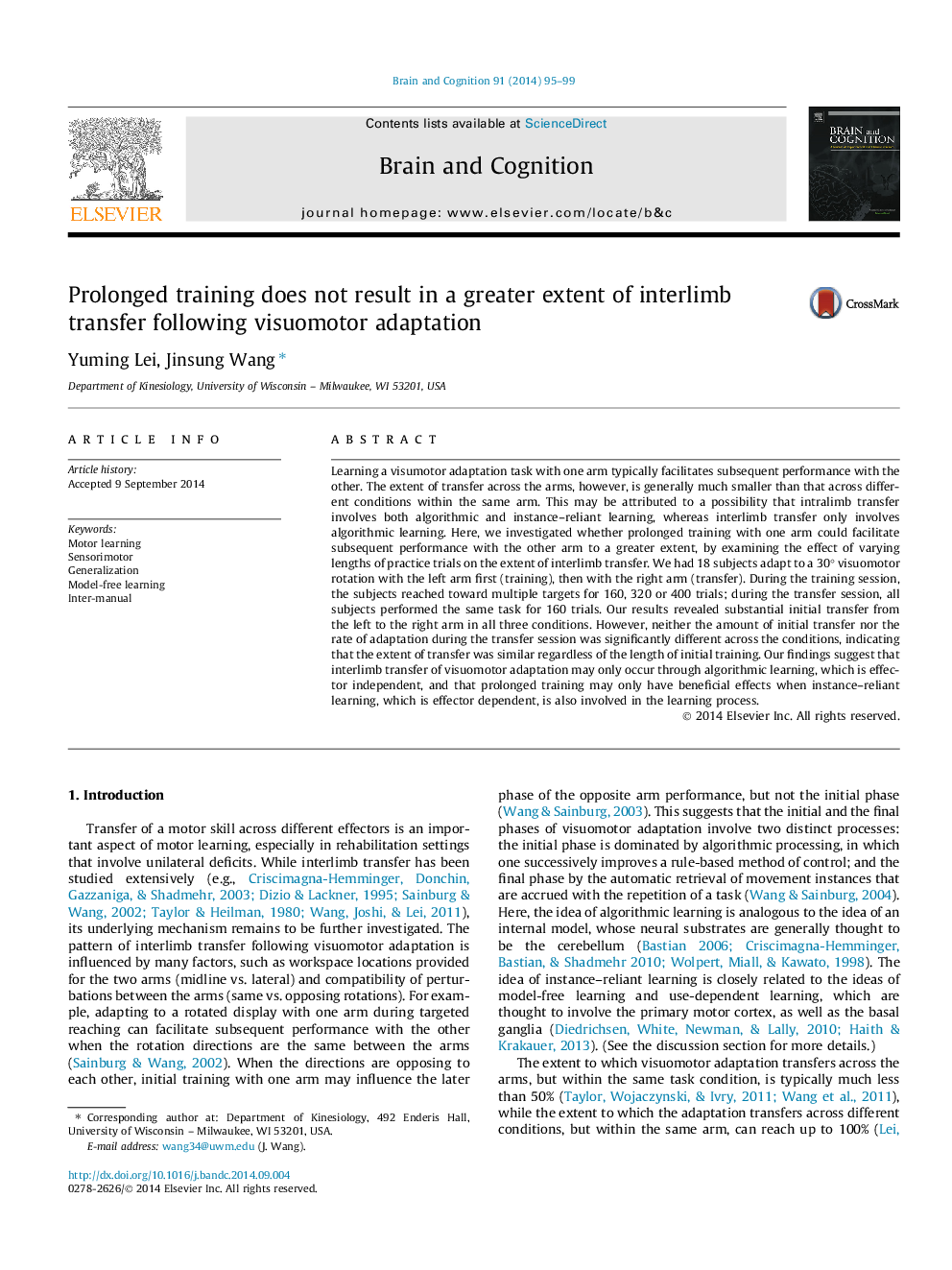| Article ID | Journal | Published Year | Pages | File Type |
|---|---|---|---|---|
| 7283202 | Brain and Cognition | 2014 | 5 Pages |
Abstract
Learning a visumotor adaptation task with one arm typically facilitates subsequent performance with the other. The extent of transfer across the arms, however, is generally much smaller than that across different conditions within the same arm. This may be attributed to a possibility that intralimb transfer involves both algorithmic and instance-reliant learning, whereas interlimb transfer only involves algorithmic learning. Here, we investigated whether prolonged training with one arm could facilitate subsequent performance with the other arm to a greater extent, by examining the effect of varying lengths of practice trials on the extent of interlimb transfer. We had 18 subjects adapt to a 30° visuomotor rotation with the left arm first (training), then with the right arm (transfer). During the training session, the subjects reached toward multiple targets for 160, 320 or 400 trials; during the transfer session, all subjects performed the same task for 160 trials. Our results revealed substantial initial transfer from the left to the right arm in all three conditions. However, neither the amount of initial transfer nor the rate of adaptation during the transfer session was significantly different across the conditions, indicating that the extent of transfer was similar regardless of the length of initial training. Our findings suggest that interlimb transfer of visuomotor adaptation may only occur through algorithmic learning, which is effector independent, and that prolonged training may only have beneficial effects when instance-reliant learning, which is effector dependent, is also involved in the learning process.
Related Topics
Life Sciences
Neuroscience
Cognitive Neuroscience
Authors
Yuming Lei, Jinsung Wang,
